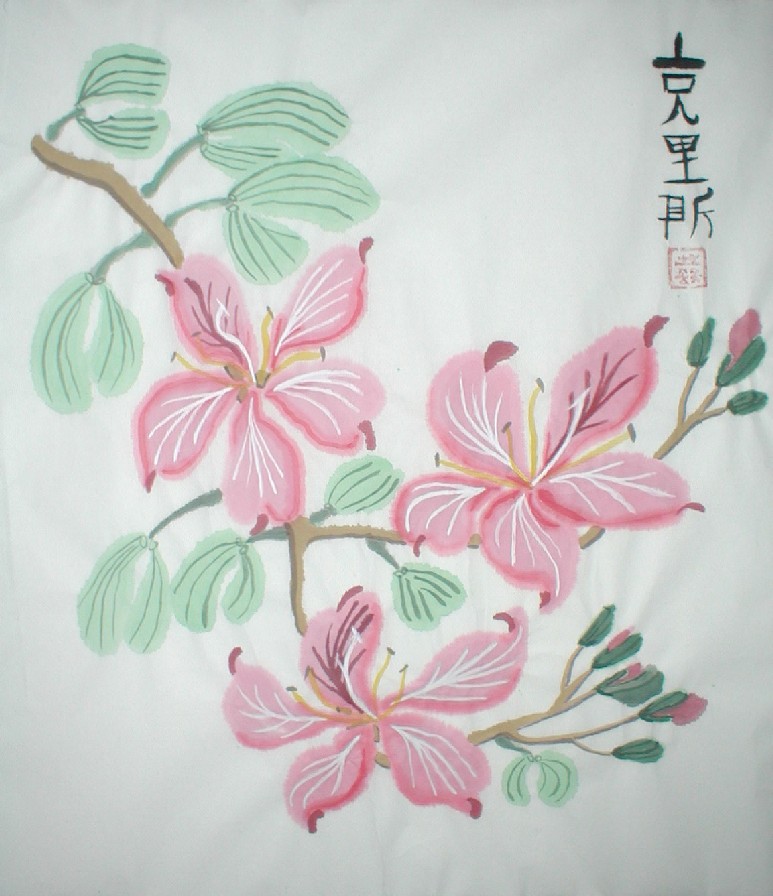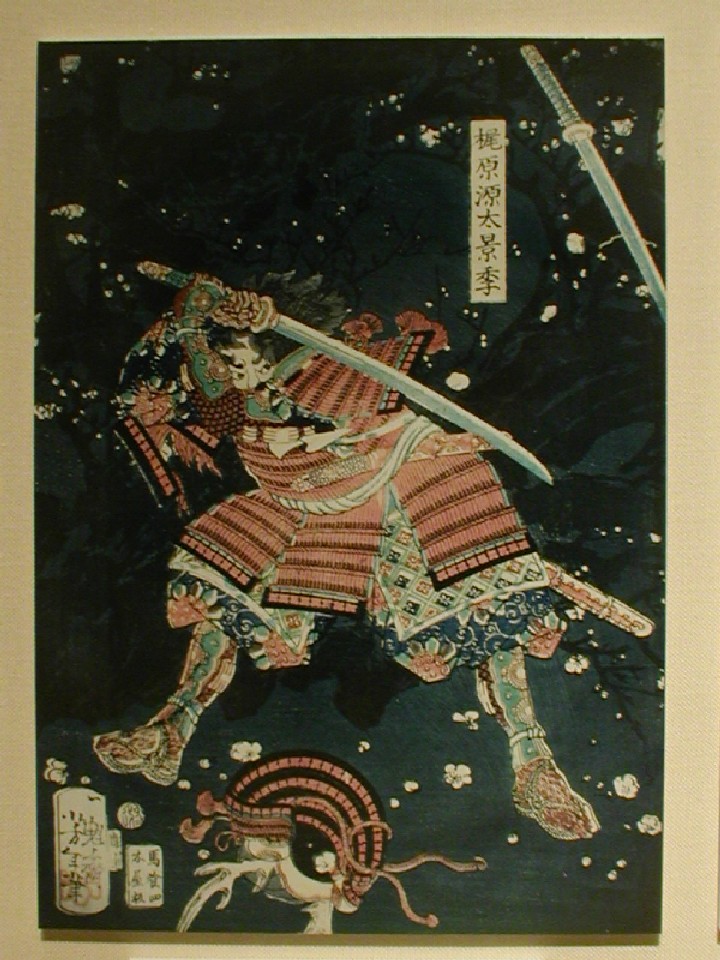
Although
the Samurai are remembered as fighters, it is important to also realise that
they were much, much more. Their lives were dictated by the Bushido (The Way of
the Warrior), a warrior code which laid down stric t rules about how members of
the Samurai class should behave. Much like the code of chivalry associated with
European knights, it taught that warriors should defend the weak, always be
courteous and polite, give aid where it was needed, and never allow anger or
fear to cloud your judgement. However, whilst knights in Europe rarely bothered
to follow their code anything more than half-heartedly, the Samurai stuck
rigidly to the teachings of the Bushido. Indeed, any Samurai who badly broke the
rules of the Bushido would be considered dishonourable, and would be expected to
take his own life by performing the ritual of Seppuku, better known as
Hara-kiri. The ritual involved the Samurai taking a sword (usually using his
wakizashi or most frequently, his tanto) and plunging it into the left side of
his own chest. He would then cut the blade diagonally upwards and to the right
side of his body. This would cause incredible agony, and required an immense
amount of discipline. In later centuries, the ritual allowed a relative to step
in and behead the Samurai with one stroke at this point, sparing them the agony
of bleeding to death on the floor. By committing this act, the Samurai was
considered to have erased the dishonour of his previous misdeeds, and would be
remembered as an honourable warrior.
t rules about how members of
the Samurai class should behave. Much like the code of chivalry associated with
European knights, it taught that warriors should defend the weak, always be
courteous and polite, give aid where it was needed, and never allow anger or
fear to cloud your judgement. However, whilst knights in Europe rarely bothered
to follow their code anything more than half-heartedly, the Samurai stuck
rigidly to the teachings of the Bushido. Indeed, any Samurai who badly broke the
rules of the Bushido would be considered dishonourable, and would be expected to
take his own life by performing the ritual of Seppuku, better known as
Hara-kiri. The ritual involved the Samurai taking a sword (usually using his
wakizashi or most frequently, his tanto) and plunging it into the left side of
his own chest. He would then cut the blade diagonally upwards and to the right
side of his body. This would cause incredible agony, and required an immense
amount of discipline. In later centuries, the ritual allowed a relative to step
in and behead the Samurai with one stroke at this point, sparing them the agony
of bleeding to death on the floor. By committing this act, the Samurai was
considered to have erased the dishonour of his previous misdeeds, and would be
remembered as an honourable warrior.
The Bushido did not only demand that the warrior behaved honourably and fought well, however. The most basic principle in any Japanese martial art is that a warrior must, first and foremost, be strong-minded, everything else taking a secondary role. The great swordsmen Miyamato Musashi, who wrote the famous 'Book of Five Rings' said "My strength comes not from my sword, nor does it come from the hands that wield it. My strength comes from my mind, for without it, I am nothing.". This philosophy meant that warriors were encouraged to broaden their minds in as many ways that they could, whether it be by reading books (or rather scrolls, which the Japanese used instead), or by pursuing artistic pastimes such as painting, calligraphy or poetry. It was common for a Samurai lord (Daimyo) to test his warriors not only through tournaments and competitions of fighting, but also through contests of painting and poetry. In fact, there was even a special form of poetic duel between two Samurai, which could start at any time, even during battle. In this duel, the challenger who started it would begin by making up half a line of poetry. It was then up to the opponent to finish the line, and retort by starting another. The first warrior would then have to finish this line, and so on. Eventually, one of the two would be unable to respond, or it would become clear that the quality of one Samurai's poetry was much better than the other's. Winning the duel would bring honour to the victor whilst the loser would be indebted to the winner, and may be asked to perform a small service for him. In battle the loser would be honour bound to surrender himself to the winner.
However,
the Bushido did not just encourage intellectual pursuits. Although intelligence
and wisdom was of first i mportance, it was considered that any truly wise
person
would see the obvious benefits of physical fitness, and would realise that it
was also important to train as a warrior. Thus, the Samurai spent much of their
time practicing and honing their already formidable abilities. From birth, sons
of warriors were taught the way of the warrior, and by the time a young Samurai
reached the age of 16, he would already be skilled in the ways of battle. By
this time, a Samurai's formal training would be complete, and he may well have
already fought for his life in a duel to the death (The famous Miyamato Musashi
killed his first opponent, a 17 year old, at the age of 13). Although he would
now be a master of martial arts, he would still have much to learn through
experience which could only be gained on the field of battle. Samurai trained in many different martial arts, although the most important was
considered to be Kendo (the way of the sword) or Kenjitsu (Sword techniques) as
it was known in those times. Of second importance were the arts of Ju-Jitsu (The
martial art upon which Judo was based) and Kyudo (The way of the bow). Many
Samurai also endeavour to learn other useful skills, such as horsemanship,
spearmanship, the use of firearms (after they were brought to Japan by European
merchants in around 1600) and swimming in armour.
mportance, it was considered that any truly wise
person
would see the obvious benefits of physical fitness, and would realise that it
was also important to train as a warrior. Thus, the Samurai spent much of their
time practicing and honing their already formidable abilities. From birth, sons
of warriors were taught the way of the warrior, and by the time a young Samurai
reached the age of 16, he would already be skilled in the ways of battle. By
this time, a Samurai's formal training would be complete, and he may well have
already fought for his life in a duel to the death (The famous Miyamato Musashi
killed his first opponent, a 17 year old, at the age of 13). Although he would
now be a master of martial arts, he would still have much to learn through
experience which could only be gained on the field of battle. Samurai trained in many different martial arts, although the most important was
considered to be Kendo (the way of the sword) or Kenjitsu (Sword techniques) as
it was known in those times. Of second importance were the arts of Ju-Jitsu (The
martial art upon which Judo was based) and Kyudo (The way of the bow). Many
Samurai also endeavour to learn other useful skills, such as horsemanship,
spearmanship, the use of firearms (after they were brought to Japan by European
merchants in around 1600) and swimming in armour.
A warrior who fulfilled all of these requirements would be considered a strong fighter, an honourable man and an excellent follower. However, the Bushido also taught that a Samurai should always strive to better himself, and never be content while there was room for improvement. Thus, it was important that a warrior also learned how to command armies in battle, so he could rise to a high position of leadership. Samurai spent much time studying the wisdom of ancient masters, and those few of them who did become truly legendary wrote their own thoughts down, so that the generations that followed the, could learn from their experiences. All Samurai read a book known as 'The Art of War' written by the ancient chinese master, Sun Tzu, who they venerated as the greatest master of warfare ever to have lived. Many of the quotes found on this site are from his book, and hundreds of Samurai lived or died by his words. Even to this day, 'The Art of War' is required reading for military officers in almost every country of the world, such was the wisdom of Sun Tzu.